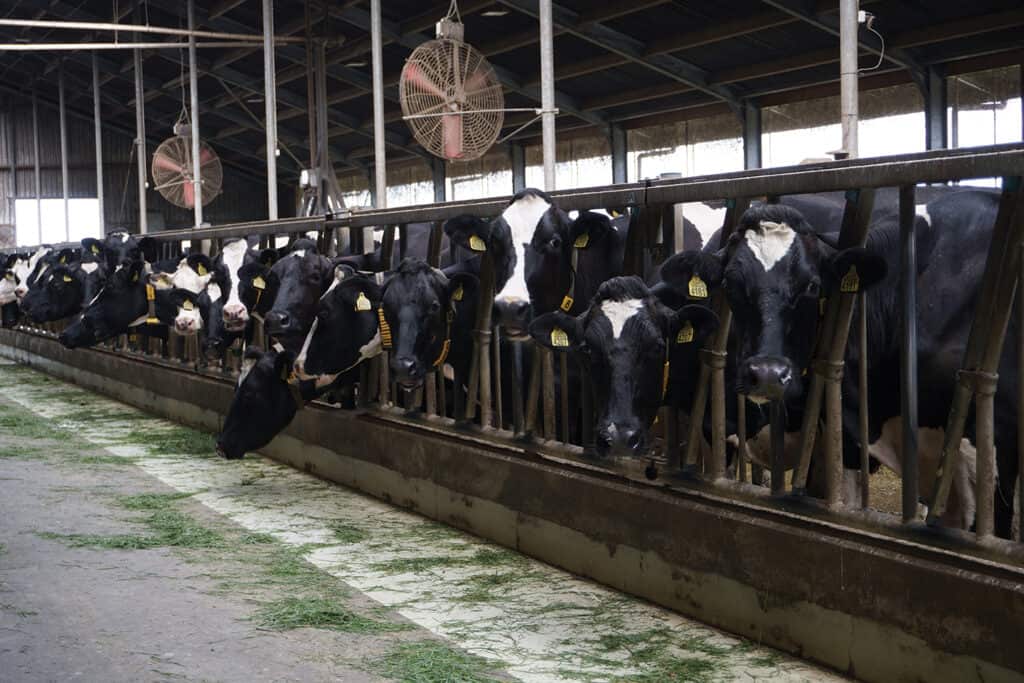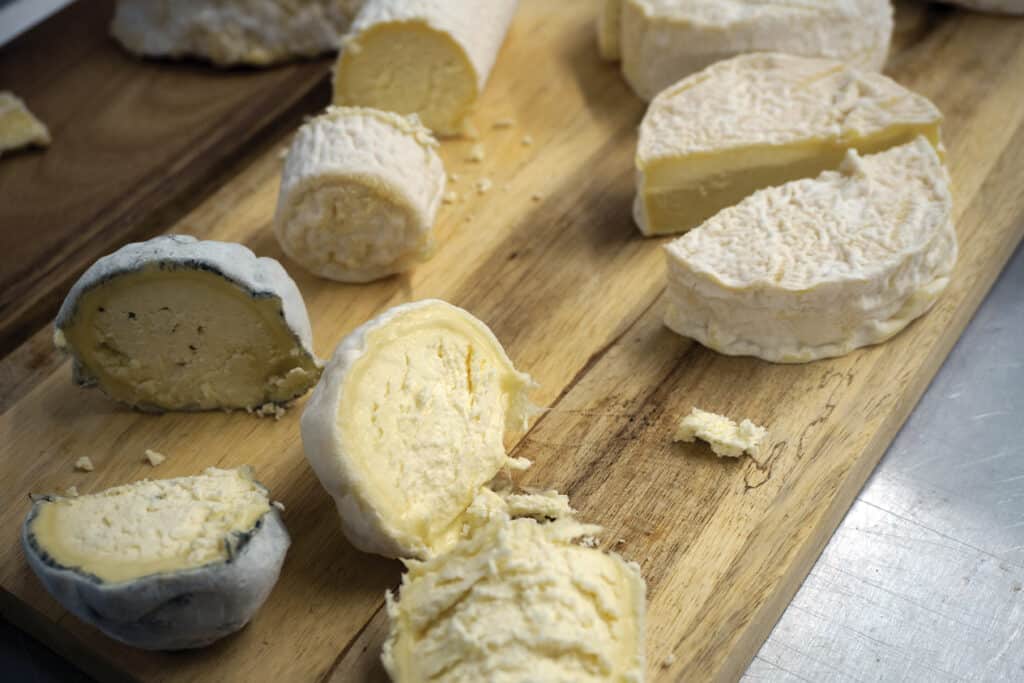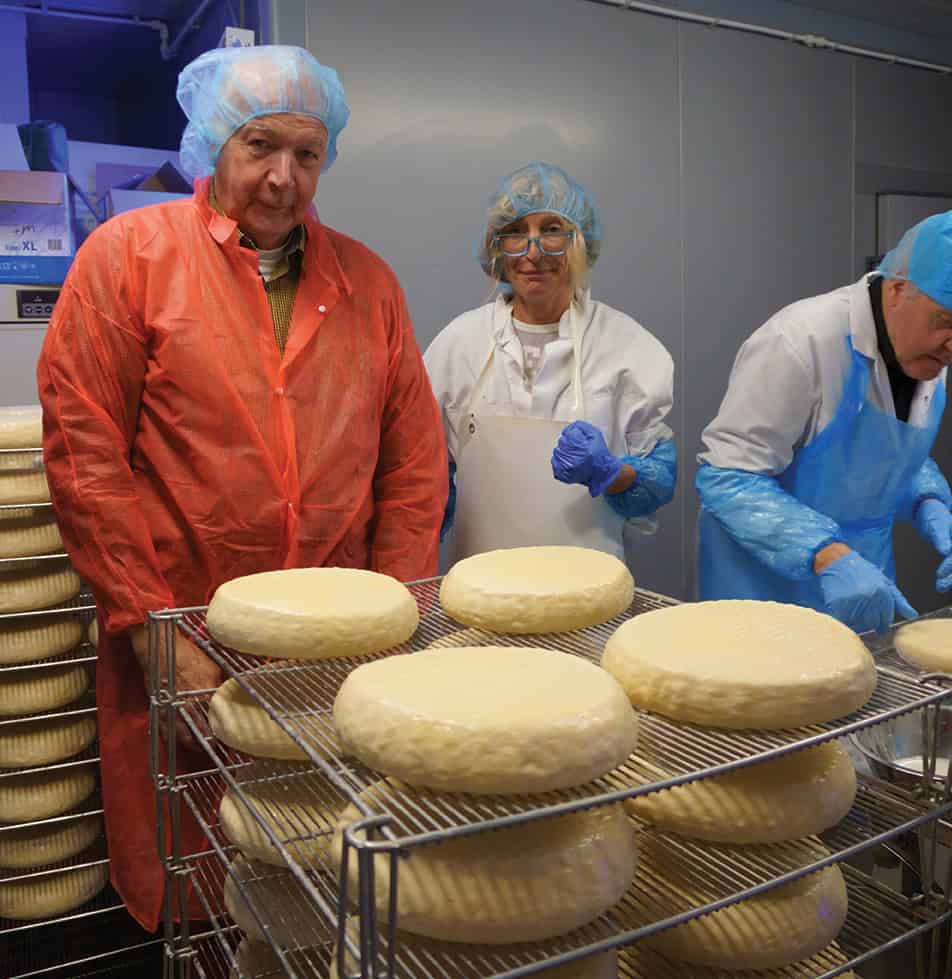Photographed by Hans Westbeek
Though the history of cheesemaking in the Netherlands goes back to at least 200 BCE, it wasn’t until the Middle Ages that the Dutch evolved into a nation of cheese lovers. The acres of damp grasslands reclaimed from the North Sea during this period proved to be exceptionally suitable for cattle rearing, and by the dawn of the Golden Age, cheese from prominent market towns such as Edam and Gouda (the latter properly pronounced HOW-dah) had become an important pillar of the country’s economy. In fact, during the first two decades of the seventeenth century, traditional Dutch cheeses were even depicted—usually cut open to display all their textural allure—in many still life masterpieces, including in Clara Peeters’ Still Life with Cheeses, Almonds, and Pretzels (1615).
The country is immensely proud of its cheeses, and rightly so. But it isn’t just the Dutch who are enamored with the wide variety of consistencies, aromas, and flavor profiles—from the buttery richness of jonge kaas (young cheese) to the crumbling texture and citrusy notes of an aged komijnekaas (cumin cheese). The Netherlands is the world’s second-largest cheese exporting country (after Germany and before France), and the wax-coated wheels are as much a national icon as tulips and windmills. It’s no wonder that many tourists eagerly visit the historic markets, go on cheese tours, and make sure to take home a wedge or two as edible souvenirs. During the past few decades, however, a new generation of cheesemakers has been looking abroad and making it clear that there’s more to Dutch cheese than its emblematic offerings.
Back to Nature
France may be famous for its exceptional goat cheeses, but since 2011, stiff competition has been brewing (or, better said, naturally fermenting) in the northern rural province of Friesland, home to Doetie’s Geiten (Doetie’s Goats). Following a career as a clinical, chemical, and medical microbiological analyst, Doetie Trinks traded her lab coat for a red Dutch farmer’s bandana, and realized her dream of returning to her roots. “My parents were dairy farmers, but only my brother was destined to follow in their footsteps,” she says. “For a girl, farming wasn’t an option. So, I went to school and later got a job at a research lab in London.”
Determined to do things differently, Trinks returned to Friesland and purchased six Toggenburger goats, an ancient Swiss breed known for its high-quality milk that’s also suitable for meat production. Her goal was to make natural cheese as it was done before the advent of commercially produced cultures and rennet, as advocated by David Asher, author of The Art of Natural Cheesemaking: Using Traditional, Non-Industrial Methods and Raw Ingredients to Make the World’s Best Cheeses. Trinks, who studied with Asher, only uses rennet derived from her own goats and allows the microorganisms in the milk to develop naturally. “During milking, the microbial flora on the teat’s skin passes through, making the use of cultures unnecessary,” she explains. “If I cooled (or heated) the milk, the flora would die.” Additionally, she uses natural materials such as wooden vats and woven baskets, which help preserve the flora. Despite the myriad obstacles of Dutch lawmaking and safety regulations, Trinks has persevered. Today she has a herd of 70 goats and makes raw-milk cheeses from almost every family. Especially noteworthy is her Grutte Grize, a soft, ash-covered cheese with a delicate acidity and mild yeasty tang.

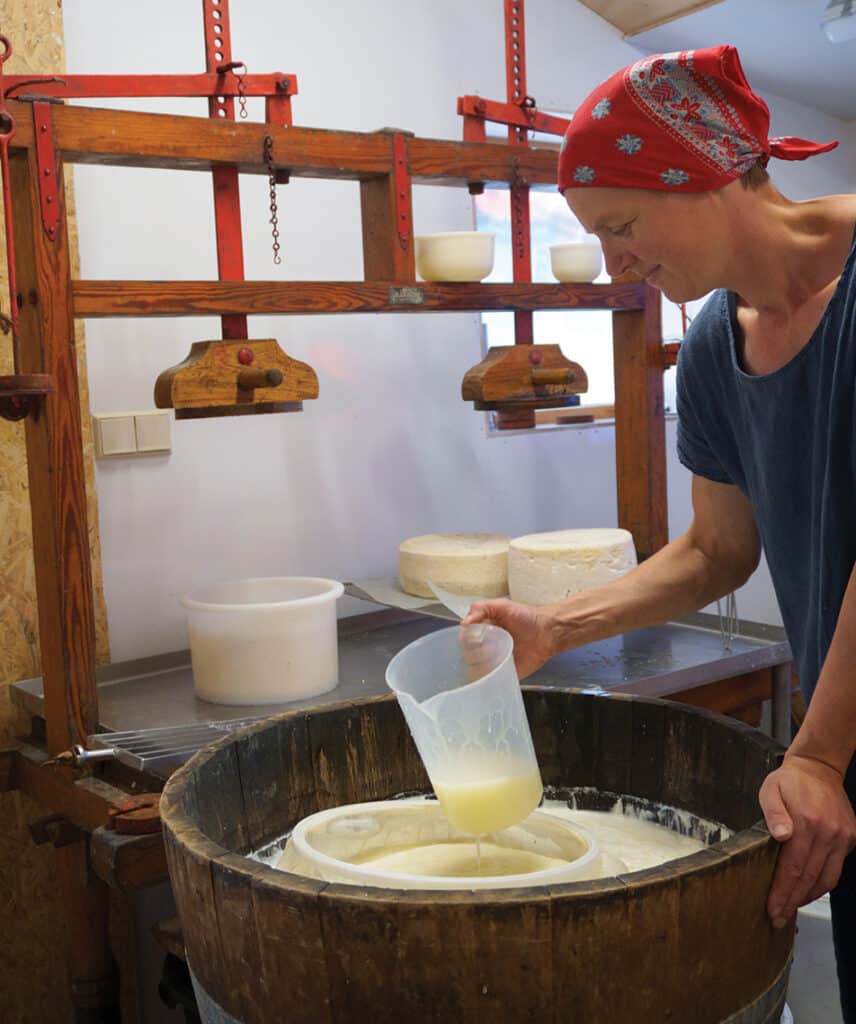
A Reflection of Dutch Terroir
Christine Köning started making cheese as a hobby in 2011 using milk from her family’s dairy farm in the town of Zevenaar, located to the far east of the country and just a stone’s throw from the German border. From the start, Köning had her mind set on crafting unique, artisan cheeses. “Typical Dutch cheese has been made here for centuries, and there are all kinds of specifications regarding how it should look,” she says. “I wanted the creative freedom that comes with making the lesser-known soft-ripened cheeses.”
After much trial and error and valuable input from her first clients, she introduced her first bloomy-rind cheese, Witte van Köning, in 2015. Aged three to four weeks and weighing about 7 ounces, it has hints of mushroom and notes of freshly churned butter when young but takes on a more earthy pungency as it matures. Though the cheese is reminiscent of camembert, she prefers not to use that name too much: “We’re not in France and don’t want to copy what already exists,” Köning says. “Our cheese has its own identity, which is very specific to our region’s terroir.”
From the beginning of April until approximately the end of October, the farm’s handsome Holstein cattle graze on lush grass that grows abundantly on the dense, mineral-rich river clay soils. Most of the milk is sold, but every morning, a small quantity is piped directly into Köning’s cheesemaking room next door to the milking parlor. Kaasmakerij Köning now produces eight different cheeses with the fresh, raw milk: four lactic varieties and four bloomy rinds. “Pasteurization would remove the milk’s flora, which gives the cheese character,” she says. “Working with raw milk allows for a full expression of flavor.”
Choosing favorites isn’t easy after tasting Köning’s cheeses. Yet the dome-shaped Bolle—meaning “bulbous” in Dutch and referring to the cheese’s appearance—is deliciously surprising. Not only is it made employing the milled-curd method used in cheddar, but its piquancy and bold, spicy nuances fool your taste buds into thinking this bloomy rind is a blue.
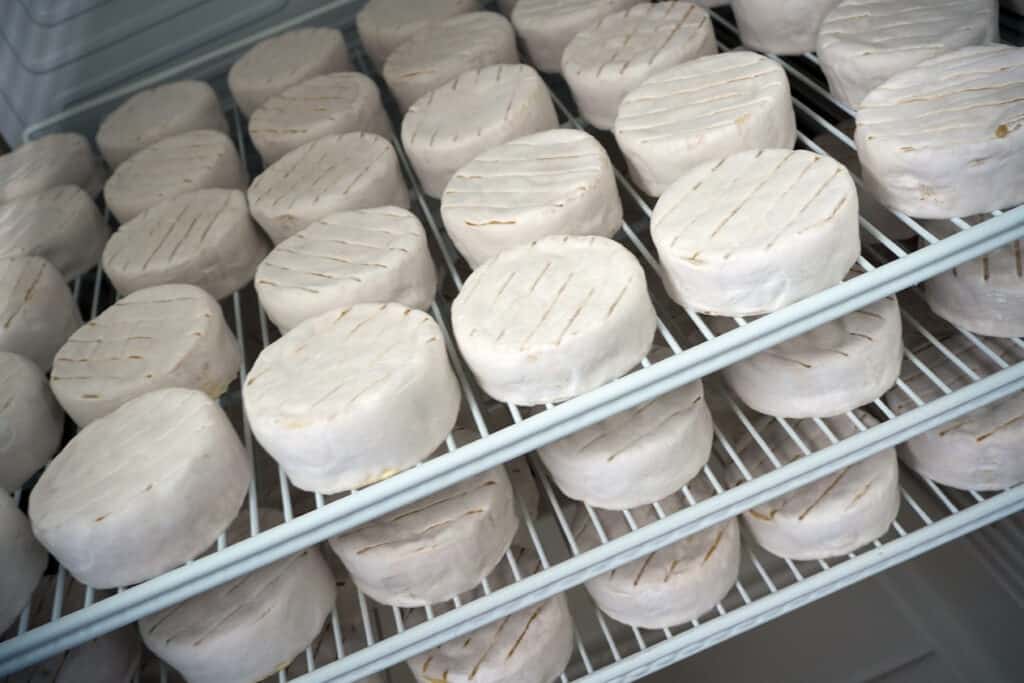
Italian Inspired
It wasn’t French-style curds but Italian that inspired Rutger Pekelharing to wave goodbye to his successful international career in information technology and become a cheesemaker overnight—literally. A friend who had been making Italian-style cheeses was about to quit and invited him to help on the last day. “When we were done, I looked in awe at the rack of cheeses we had just made,” Pekelharing says. “I drove home that night, just as the sun was setting, and for the first time in my life, felt like I had done something great.” The following morning he went back, announcing he wanted to take over. Luckily, his wife Marieke was immediately on board, and the couple started making monthly trips to the village of Osmate in northern Italy to learn the art of cheesemaking under the tutelage of third-generation artisan cheesemaker Cesare Ribolzi. “I was convinced we could make the same quality cheese but with our own unique recipes, says Pekelharing.” Marieke’s background in chemistry would prove very handy when it came time to start experimenting.
When they took over Oudwijker in 2015, the couple continued using the facilities at a dairy farm in Cothen, where the milk was (and still is) sourced. By 2019, however, they had built a small cheesemaking room with four aging cellars behind their house in Lopikerkapel. With the help of a small team, the Pekelharings make cheese twice a day, almost every day of the week, and workdays are long, often starting at 2:30 a.m.
Their love for cheese coupled with hard work and dedication has paid off. The Pekelharings currently make six cheeses (two bloomy rinds, two washed rinds, and two blues) inspired by Alpine varieties such as taleggio and gorgonzola. Two of the cheeses—Colosso, a robust blue with an intensely herbal nose and complex flavors of licorice and dark chocolate; and Stella, a washed-rind cheese with the smoky savoriness of toasted nuts—are made with creamy buffalo’s milk from a water buffalo farm in the town of Heusden.
Like Trinks and Köning, the Pekelharings are proving that gouda isn’t the only reason the Netherlands has earned a reputation as one of the world’s most delicious (not to mention innovative) cheese destinations.
WHERE TO BUY
The cheeses mentioned in this story are available at some of the Netherlands’ best cheese shops, delicatessens, and restaurants. In Amsterdam, you’ll find them at Fromagerie L’Amuse (Olympiaplein 125), or head to Lindenhoff Marché, a farm selling quality products from small-scale producers, located 20 minutes from the city center in the town of Baambrugge (Rijksstraatweg 21).
For an unforgettable tasting experience and to learn more about these innovative cheeses, book a table at cheese restaurant, Kaasbar (Ferdinand Bolstraat 10, Amsterdam and Lijnmarkt 12, Utrecht). Twenty-four varieties of Dutch cheese are temptingly presented on a conveyor belt with imaginative and often unexpected pairings. Oudwijker’s Colosso, for example, is served on a chocolate cookie and crowned with shavings of dark chocolate. All the cheeses are hand picked from small-scale farmers, and wine tips are offered with each pairing.



